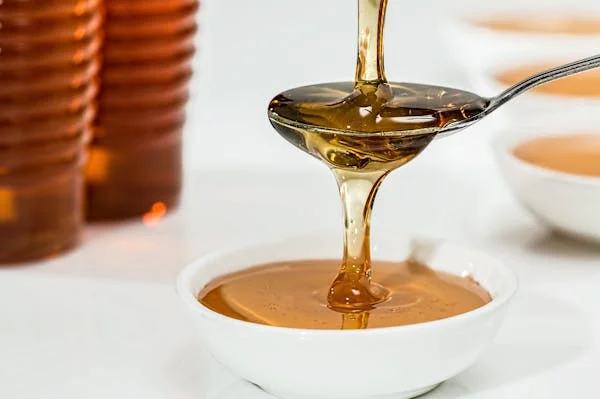Introduction
Mielado, derived from the Spanish word “miel,” meaning honey, is a naturally sweet syrup known for its incredible flavor and health benefits. Traditionally associated with Latin American and Mediterranean cultures, this syrup is used in various culinary applications, health remedies, and even skincare routines.
This article explores everything you need to know about it, from its origin and production to its nutritional profile, benefits, and versatile uses.
Origin and History of Mielado
It has a rich history deeply rooted in regions where honey production and natural sweeteners have been part of the culture for centuries.
- Traditional Roots: In Latin America, it is often made using raw honey or sugarcane juice, cooked down to a thick, syrupy consistency. It has been used as a primary sweetener long before refined sugars became widespread.
- Cultural Significance: In Mediterranean cultures, mielado often refers to natural syrups made with honey, carob, or grape molasses, symbolizing health and prosperity in traditional cuisine.
The versatility and cultural importance of mielado have allowed it to persist as a beloved sweetener in modern times.
How Mielado is Made
The production process of mielado varies slightly depending on the ingredients and regional methods. Below are the primary methods used:
1. Traditional Honey-Based Mielado
- Ingredients: Raw honey is the main ingredient, sometimes combined with water or citrus juice for added flavor.
- Process: The honey is slowly simmered over low heat to achieve a thick, caramel-like consistency. This process preserves the natural enzymes and nutrients in honey.
- Result: A golden-brown syrup with a rich, sweet flavor.
2. Sugarcane-Based Mielado
- Ingredients: Fresh sugarcane juice or panela (unrefined cane sugar).
- Process: The sugarcane juice is boiled until it thickens and develops a deep molasses-like taste.
- Result: A dark, robust syrup often used as a sweetener in beverages and desserts.
3. Grape or Carob Mielado
- Ingredients: Grapes or carob pods are the base ingredients.
- Process: The fruit is crushed to extract juice, which is then boiled to create a thick syrup. No additional sugar is added.
- Result: A unique syrup with fruity or nutty undertones.
Nutritional Profile of Mielado
Mielado is a natural sweetener packed with nutrients, depending on its base ingredient. Here’s a breakdown of its nutritional value per 100 grams:
| Nutrient | Amount | Health Benefits |
| Calories | 290–320 kcal | Provides energy for daily activities. |
| Carbohydrates | 75–80 g | Source of natural sugars like fructose and glucose. |
| Calcium | 5–15 mg | Strengthens bones and teeth. |
| Potassium | 10–30 mg | Regulates blood pressure and fluid balance. |
| Magnesium | 3–10 mg | Supports muscle and nerve function. |
| Iron | 0.2–1 mg | Enhances red blood cell production. |
Note: The nutritional composition varies based on whether mielado is made from honey, sugarcane, or fruits.
Health Benefits of Mielado
1. Natural Energy Booster
It is a quick and effective energy source due to its natural sugars. Unlike processed sugars, it provides sustained energy without sudden crashes, making it ideal for athletes and active individuals.
2. Rich in Antioxidants
Honey-based it contains antioxidants like flavonoids and phenolic acids. These compounds combat oxidative stress, reducing the risk of chronic diseases such as heart disease and cancer.
3. Supports Digestive Health
It, especially honey-based varieties, contains enzymes that aid in digestion. It can help alleviate constipation and promote gut health.
4. Strengthens the Immune System
The antibacterial and antifungal properties of it boost the immune system, helping the body fight off infections. Regular consumption can also soothe sore throats and reduce inflammation.
5. Improves Skin Health
When used topically, it acts as a natural moisturizer. Its antibacterial properties make it effective in treating acne and minor skin irritations.
Culinary Uses of Mielado
The versatility of it makes it a staple in kitchens worldwide. Here are some popular ways to use it:
Sweetening Beverages
It is a natural alternative to refined sugar in beverages like tea, coffee, and smoothies. A small spoonful can add a rich, sweet flavor.
Baking and Desserts
- Cakes and Cookies: Substitute mielado for sugar to create moist, flavorful baked goods.
- Toppings: Drizzle it over pancakes, waffles, or ice cream for a decadent treat.
Marinades and Sauces
Its rich flavor pairs well with savory dishes. It is often used in marinades for meats or as a glaze for roasted vegetables.
Salad Dressings
Mix it with olive oil, vinegar, and herbs to create a sweet and tangy salad dressing.
Mielado in Traditional Medicine
In addition to its culinary uses, it has been a key ingredient in traditional medicine. Below are some remedies that incorporate mielado:
Cough and Cold Relief
A spoonful of mielado mixed with warm water and lemon can soothe a sore throat and reduce coughing.
Digestive Aid
Consuming mielado on an empty stomach is believed to promote healthy digestion and alleviate bloating.
Skin Remedies
Applying it to minor cuts or burns can speed up healing and reduce scarring due to its antibacterial properties.
How to Store
To maintain the quality and flavor of it, proper storage is essential:
- Use Airtight Containers: Store it in a glass or plastic container with a tight-fitting lid.
- Keep in a Cool, Dry Place: Avoid exposing it to direct sunlight or high humidity.
- Prevent Crystallization: If the syrup crystallizes, place the container in warm water to restore its consistency.
Differences Between Mielado and Honey
While it is often associated with honey, there are key differences between the two:
| Aspect | Mielado | Honey |
| Ingredients | Honey, sugarcane, or fruits | Pure honey from bees |
| Consistency | Thicker and syrup-like | Variable, depending on the type |
| Flavor | Can vary based on the ingredients | Distinct floral sweetness |
| Nutritional Value | More carbs, fewer vitamins | Higher in natural enzymes and antioxidants |
Sustainability and Ethical Considerations
Consumers are increasingly mindful of the environmental impact of their food choices. Here’s how it measures up:
- Sustainable Production: Many small-scale producers use eco-friendly methods to create it.
- Support for Local Farmers: Buying it from local producers supports rural economies and promotes fair trade practices.
How to Choose the Best Mielado
When purchasing mielado, consider the following tips:
- Check the Label: Ensure the product is free from additives or artificial sweeteners.
- Source: Opt for it from reputable local producers to ensure quality.
- Color and Consistency: High-quality it has a rich, uniform color and smooth texture.
Conclusion
Mielado is more than just a sweetener; it’s a symbol of tradition, health, and culinary excellence. Whether drizzled over pancakes, used as a natural remedy, or incorporated into skincare routines, it offers numerous benefits that cater to modern lifestyles.
By choosing it, you embrace a natural, versatile, and sustainable alternative to refined sugars, making every meal or remedy a little sweeter.
Start exploring the wonders of it today and discover its endless possibilities for health and flavor!
FAQs
What is Mielado made from?
Mielado is crafted from natural ingredients such as honey, sugarcane juice, or fruits like grapes and carob, depending on the region.
Is Mielado a healthier alternative to sugar?
Yes, Mielado contains natural sugars, antioxidants, and nutrients, making it a healthier and more nutritious choice compared to refined sugar.
How can Mielado be used in cooking?
Mielado is highly versatile and can enhance beverages, desserts, marinades, and salad dressings, or be drizzled over pancakes and waffles.
What are the health benefits of Mielado?
Mielado provides energy, aids digestion, strengthens immunity, and improves skin health when consumed or used topically.
How should Mielado be stored properly?
Store Mielado in a cool, dry place, in an airtight container, away from direct sunlight to preserve its quality and flavor.



